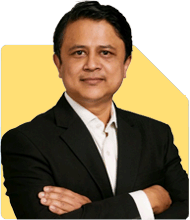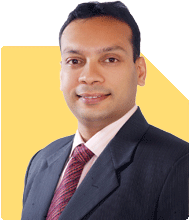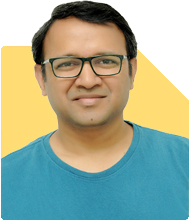I am a 30 year old Advocate practicing in the District Courts of Delhi, earning 30 to 35 lakhs annually. I got married last year and currently live with my parents and siblings. I used most of my savings during my marriage and now have 20 lakhs as an emergency fund, which I do not want to touch. I have no loans or EMIs, and I have not invested in mutual funds, stocks, FDs, or any other financial instruments yet. My wife and I are covered under government provided health and term insurance. I want to retire at 60 with a post tax income of 2 lakhs per month adjusted for inflation. I am also open to early retirement at 50 if financially viable. I would like to know the target retirement corpus and how much I should invest monthly, preferably in mutual funds or equity, to achieve this. I would also appreciate guidance on asset allocation, inflation assumptions, and tax efficiency.
Ans: You have a strong income and disciplined savings habit. That is truly commendable.
Your emergency fund of Rs 20 lakhs gives you great stability.
Also, no loans or EMIs is a strong foundation.
This is the perfect time to create a long-term, well-thought-out wealth creation plan.
Your Retirement Goal – A Clear Vision
– You aim for Rs 2 lakhs per month post-tax income at retirement.
– You wish to retire at 60 but are open to retiring at 50.
– These are two separate targets. Both need clear planning.
– Planning for both helps you stay flexible and financially secure.
Inflation – The Silent Expense
– Inflation eats into money’s value.
– At 6% inflation, Rs 2 lakhs today may need Rs 6.4 lakhs at age 60.
– For age 50 retirement, it will still be Rs 3.8 lakhs monthly.
– Retirement income must increase with inflation every year.
– This inflation-adjusted lifestyle must last 30+ years post-retirement.
Taxation – Post-Tax Income Planning
– Your goal is post-tax income. So, taxes during withdrawal matter.
– Equity mutual fund LTCG beyond Rs 1.25 lakhs is taxed at 12.5%.
– STCG is taxed at 20%.
– Debt mutual funds are taxed as per your tax slab.
– All investments must factor these for accurate planning.
Your Retirement Corpus – What You Will Need
– For retirement at 60, you will need Rs 10 to 11 crore approx.
– For early retirement at 50, you may need Rs 13 to 14 crore approx.
– This range depends on inflation, expenses, and post-retirement lifestyle.
– This is a rough benchmark. Regular reviews are needed to stay on track.
Monthly Investment Required – Staying Committed
– You need to invest Rs 1.2 to 1.5 lakh per month consistently.
– This assumes 11-12% average long-term return.
– For early retirement at 50, monthly investment should be Rs 2 to 2.2 lakh.
– Starting now gives you power of compounding.
– Discipline matters more than timing the market.
– Gradually increase SIPs every year as income grows.
Emergency Fund – A Good Buffer
– You have Rs 20 lakhs as an emergency fund.
– Do not use it for investments.
– Keep this in liquid mutual funds or ultra-short-term funds.
– Ensure it grows slightly, beating inflation.
Health and Term Insurance – Covered, But Review Annually
– Government health and term insurance are valuable.
– Please review policy cover amount annually.
– With rising costs, private top-up plans may be required later.
– Ensure your wife has separate term insurance as well.
Asset Allocation – Balance of Growth and Safety
– Your investment horizon is 20-30 years.
– You can afford high equity allocation.
– Suggested asset allocation:
80% in equity mutual funds
20% in debt mutual funds or conservative hybrid funds
– This allocation balances growth with some stability.
– Review yearly and rebalance if asset mix shifts.
Why Mutual Funds – Powerful Wealth Creation Tool
– Mutual funds are ideal for long-term investors.
– They offer diversification and professional fund management.
– You benefit from expert research and risk control.
– SIP (Systematic Investment Plan) builds wealth slowly but surely.
– You can start with Rs 50,000 and scale up to Rs 1.5 lakh per month.
Regular Funds vs Direct Funds – Choose Wisely
– Direct funds lack professional support.
– You must pick, monitor, and rebalance all alone.
– Mistakes can cost lakhs over time.
– Regular plans via a Mutual Fund Distributor with CFP support provide guidance.
– You get portfolio review, tax planning, rebalancing, and behavioural coaching.
– This handholding is valuable for achieving goals smoothly.
– Slightly higher cost in regular plan is worth the value added.
Why Avoid Index Funds – Not Always Suitable
– Index funds just copy the index.
– They don’t protect in falling markets.
– No active research or risk control.
– You miss fund manager’s insights and sector rotation.
– Active funds adapt to economic and market changes.
– Active funds with strong track record outperform in India’s dynamic market.
– With professional fund manager, your portfolio gets real-time strategy.
Debt Mutual Funds – For Stability and Liquidity
– Use debt mutual funds for your 20% allocation.
– Choose high-quality short-duration funds or conservative hybrid funds.
– These give stability without locking funds like FDs.
– Returns are better than savings account, though not very high.
– Be aware: Taxed as per your income slab.
– Use only for parking funds or reducing overall volatility.
SIP Strategy – Build Step by Step
– Start SIPs across diversified equity mutual funds.
– Include large-cap, flexi-cap, mid-cap, and focused funds.
– Start with 3 to 5 good funds.
– Add more only if your income and SIP size grows.
– Review SIP performance yearly.
– Increase SIP amount by 10% yearly to match income growth.
– Stay invested during market dips. Avoid panic withdrawal.
Retirement Planning – Not Just Numbers
– Planning is not only about investing.
– You must plan post-retirement expenses and lifestyle too.
– Consider healthcare, hobbies, family support, and legacy.
– Plan for income stream, not just a lump sum.
– Think about Systematic Withdrawal Plans (SWP) after retirement.
– Withdraw monthly from mutual funds tax-efficiently.
Tax-Efficient Withdrawal – Protect Your Income
– Avoid fixed deposit-type withdrawals after retirement.
– They attract full tax.
– Instead, withdraw from equity mutual funds using SWP.
– Use capital gains tax slab wisely.
– Keep gains under Rs 1.25 lakh LTCG to pay 0 tax.
– Plan withdrawal across financial years smartly.
– A Certified Financial Planner can structure this better.
Review Existing Policies – If Any
– You did not mention having LIC, ULIP, or investment-insurance policies.
– If you have any such policies from past, please review them.
– These often give low returns and high charges.
– Consider surrendering and switching to mutual funds.
– Reinvest in equity mutual funds for better long-term results.
Monitoring and Annual Review – Must Be Ongoing
– Retirement planning is not set-and-forget.
– Review progress once a year.
– Rebalance portfolio to maintain asset allocation.
– Track fund performance.
– Remove consistently underperforming funds.
– Add new funds if needed.
– Increase SIPs as income rises.
Behavioural Discipline – Key to Wealth Creation
– Avoid pausing SIPs during market fall.
– Never withdraw due to market fear.
– Follow asset allocation even during bull runs.
– Avoid chasing returns.
– Focus on long-term wealth and financial freedom.
Spouse Involvement – Shared Financial Vision
– Involve your wife in financial planning.
– Align both your goals and expectations.
– Share access and awareness of investments.
– Nominate each other across all investments.
Goal Segmentation – More Than Retirement
– Retirement is one goal.
– You may plan for home, travel, children, etc. later.
– Tag SIPs to separate goals.
– Avoid mixing short-term needs with long-term investments.
Investing Through MFD With CFP Support – A 360° Solution
– An MFD with Certified Financial Planner support gives complete handholding.
– You get right asset mix, fund selection, rebalancing, tax strategies, and emotional control.
– They help with realignment when life stages change.
– You avoid DIY mistakes and emotional investing traps.
– This creates peace of mind with professional insight.
Finally
– You are in a strong financial position.
– Early action can build Rs 10 to 14 crore comfortably.
– Stick to SIPs in regular mutual funds with proper asset allocation.
– Avoid direct funds and index funds due to lack of strategy and support.
– Track inflation, rebalance, and increase SIP every year.
– Trust the power of compounding and professional guidance.
– Early retirement is possible with discipline, commitment, and right choices.
Best Regards,
K. Ramalingam, MBA, CFP,
Chief Financial Planner,
www.holisticinvestment.in
https://www.youtube.com/@HolisticInvestment























